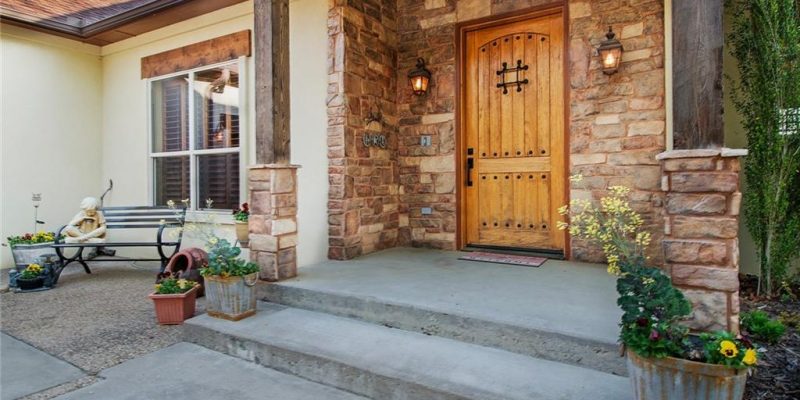In the Real Estate World, this time of year is also known Selling Season! With kids out of school families are ready to move over the summer break. To new construction builders, this means that they will make at least 75% of their projected income, if not more, between the months of March through August.
Most builders would have planned accordingly when they finished out last year, and have the majority of their inventory homes completed for summer move-ins. The model homes were touched up and freshened up in the spring and the sales representatives are highly trained and eagerly awaiting your arrival!
The industry has certainly changed in the last 5-10 years. New Home Communities no longer have vast model home parks with 10+ model homes to tour through right in a row. Buyers don’t necessarily just go out for a drive and follow the bandit signs anymore. Most buyers are doing the bulk of their research upfront and have already had their first or even second impression of a builder long before they walk through a model home door. However, the amount of reliable information that is out there is slim, to say the least.
Most builders have a user-friendly website, yet there isn’t exactly a central, non-biased hub of facts and information about each one. You probably have heard horror stories from some friends about build processes and stories from others who would never buy used again because they loved their build so much. What information is correct? What do you need to know before walking into a model home and purchasing a new home?
1. Sales Counselors are There to Help You…
When you first walk in the model door and the Sales Rep says, “How can I help you today?” They really mean it. They want to help you achieve your goal. Tell them what your goal is. Few things are more frustrating to a builder’s rep than hearing “I’m just looking,” because we know you’re not just looking. You didn’t take time out of your Saturday, with your kids in tow, drive out of the way from everything else you’re doing that day to just wander. Speak up. Tell the rep “I’m a year out but wanted to see what this looked like,” or “I only have 15 minutes but am looking for a home soon.” The Sales Rep has a lot on their plate, believe me, they will be incredibly grateful if you simply tell them what you’re after so they can get it to you without the guessing games.
2. But they work for Commissions…
Did you know that the builder’s reps do not get paid until your home closes? That means if you’re going to start construction with ABC Builder, that salesperson is probably going to spend at least 6-9 months with you before they ever see a dime.
Very few buyers make their home decision in the first visit or two, so that salesperson will probably work with you for about a month, for free, before you even sign the contract. Their goal is to keep you on contract, engaged, and HAPPY until your home is completed, and you close. If you’re not happy, they won’t get paid. Typically, if they’re telling you no on something, it’s because it’s coming from management.
3. Start with Your Needs
Before you ever walk into a builder’s model, sit down and really think through what you need and what you want. As a former builder’s rep, I would say that at least half of the people who walked in my door would say something like “I’m not sure what I’m looking for,” or “I’ll know it when I see it.” What you just told me was “I’m wasting yours and my time today.”
If you’re looking for a home you already know a few things:
1) something about where you are now isn’t working for you.
2) you live with X number of people, you need at least that many sleeping spaces
3) somewhere in your head there is a vision of colors, finish out, and at least a few specific spaces like an office or media room, otherwise, you wouldn’t be looking.
If you sit down and think it through, you know you need at least 3-4 beds, a study, big yard or little yard, formals or no formals… you get the picture. Share that with the onsite person. This way they won’t hand you a packet full of floorplans you don’t need or want.
4. Don’t shop without a Pre-Qualification
Without a Pre-qualification letter you’re working backwards. In the average Metro area (DFW for example, since that’s where I am) within 5 square miles, you can find new homes ranging from $200,000 all the way to $2,000,000, many times in the same community!
Getting a quick Pre-Qualification WITH A CREDIT CHECK goes a very long way in narrowing down the scope of home choices for you. The credit check portion of this is imperative. I have lost more deals over the years with people who had their basic Pre-Qualifications, but had no idea there was an old collection or all those “save 20% today with our card” offers would come back to haunt them. There are few things more heartbreaking in Real Estate than losing your dream home because you don’t qualify.
Going out with your full Pre-Qualification will save you so much time in the end. You will not waste time looking at communities you can’t afford and knowing what you can afford will give you the upper hand when you start to negotiate with the builder.
 5. Take Your Time to Compare Apples to Oranges and Bananas
5. Take Your Time to Compare Apples to Oranges and Bananas
It can become overwhelming when you get down to comparing builders; so much so that you’ll probably end up only comparing incentives because you understand numbers. You’ll probably even hear a sales rep or two say “It’s not like comparing apples to apples” if you ask how they stand up to Builder B. You do have several tools at your disposal to make comparing the builders easier, if you know how to use them, and it’s not the incentive. Put the incentive away for later!
Start with the Standard Features Sheet, Included Upgrades, or whatever else they’re calling it. Every builder should give you a page that states what all is included at the base price, or “for free.” Don’t be afraid to get a little nerdy and create some kind of a spreadsheet for your top 3-5 choices so you can really line up who is giving you what. Then assign a dollar item to those upgrades that some include but others don’t and subtract that from their Incentive or discounts to make them all comparable to each other. Now, who is offering the better deal? You may be surprised that it’s not actually the builder with the biggest incentive.
***Pro-Tip: when assigning a dollar value to an upgrade, get it directly from the builders in writing! If it’s something commonly asked for like granite, or wood floors, that sales rep should at least know a good estimate. Every builder will be different with up to a 40% swing up upgrade prices so get them individually. If they will not give you pricing before you contract, walk away, don’t do business with them. You want it in writing so that you have the number when you contract. If something comes in much higher than the sales rep quoted, make them stand by their original quote.
 6. Do 3rd Party Research
6. Do 3rd Party Research
The other way to compare builders is by researching reviews. You probably read reviews on the last phone you purchased, researched safety features of your car, and probably even read reviews before booking your last vacation hotel, so of course, you should do this before buying a new home.
The internet is a powerful tool, and you absolutely should use it, However, understand people are far more likely to post the bad over the good. Every builder will probably have something bad out there about them. My advice, if there are only a few reviews and they’re negative, take it with a grain of salt.
What you’re looking for are trends. If you come across page up on page of reviews about builders not honoring their warranty, cracks in walls after closing, etc. you need to pay attention to those, especially if those remarks are showing up in your area.
What do you do if you still really want that home and the builder has bad reviews? Grill that sales rep and ask to speak to a warranty representative or manager who can give you more information about those specific issues. Don’t be afraid to walk away if they don’t give you an answer that makes you comfortable.
7. Negotiate Your Extras Up-Front
Most builders have some form of advertised incentive. Sometimes these are corporate generated, which you’ll see published on their website, but many times these are community specific.
Managers will take the price of the home, and the average amount people add in upgrades and use that to figure out a bottom line. Things like incentives and commissions will then be added on top of that bottom line. Most of the time, my managers at each builder would tell me “you have X% to play with” or “your incentive is up to $15k.” I would then structure my community incentive around that. If I was working with $15,000, my incentive would be around $10,000 so I’d have room to negotiate from there.
Apart from a few “take it or leave it” type builders or new community openings where the demand is super high, you will have anywhere from 2-5% on top of the given incentive to play with. You need to use this to get what you want in the negotiations, and you need to package it in a smart way.
The reason why you see most builder incentives tied to upgrades is because they mark upgrades up a lot more than the base house. Giving you $10,000 in upgrades may only cost the builder $6,000. So, you’re going to get more by asking for more in upgrades than you will if you just ask for $5,000 off. Not to mention that your $5,000 over 30 years is really a drop in the bucket on your monthly, so only works for you if you have to get that price lower for your loan qualification (but please don’t max your loan out! That’s another topic for another day!).
When negotiating your extras, it is also important to go to that builder with the facts in check. Any sales rep who is remotely good at what they do shops their competition regularly. I would recruit a friend or a new hire at least every 3 months to go and shop my top competition, getting their features, incentives and even finding out how far they can push them in negotiations. If a customer came to me and tried to negotiate another $20,000 off because the other builder was offering that, I knew with accuracy if that was feasible or not. If I wasn’t sure, you could bet my assistant was headed out to figure it out ASAP. If they know you’re bluffing, you’ve immediately lost the negotiation.
8. Don’t be afraid to show your cards
You’ve done it. You have narrowed it down to two homes with two different builders and you’re spending your Saturday negotiating the best deal you can get out of each of them. Show them your cards. You’re not playing poker; you’re buying a house.
In order to get everything you want you need to tell the person you’re negotiating with exactly what you’re getting out of Builder B, how much you’ve been approved for on your loan, how much you’re prepared to spend monthly, and the amount you can put down. They need to know how to work the numbers in your favor. Remember, they aren’t going to get paid if you don’t sign!
On more than one occasion, I looked at everything in front of me and told my customers that Builder B was by far the better deal and I couldn’t beat it. If I wasn’t going to get the deal, I needed to move on to someone I could win.
If that builder does come back with everything that you asked for, be prepared to write a contract.
9. Before you sign, addendums, warranty, and pricing take the contract home and read it all. Make a list of questions to ask
It always amazed me at how many people would sign a contract without reading it. By signing a Real Estate contract, you are legally binding yourself to purchase that home. You need to know what you’re getting into. However, with 40+ pages stacked up, it’s easy to look at that sales rep or your kids who are overdue for lunch and think “I’m not going to be that guy, let’s just get this done.” Take it home. Study it. Really think about it. Once you sign, the odds of getting your money back are slim to none!
As you read through the contract, you need to pay attention to what you are obligated to and to what the builder is obligated to. Chances are they aren’t obligated to much, and you’re obligated to a whole lot. What happens when something goes wrong? At what point can you get your money back? What if the home doesn’t appraise? Once that train starts rolling and they have your deposit money, you could be out tens of thousands of dollars if you want to back out next month.
10. Oh you don’t have an agent? New Construction Realtor
Whatever you do, do NOT fall for the “Oh you don’t have an agent? I’ll give you 3% off.” Or “I’ll put this agent on the deal, and they’ll give you their full commission.” trick!!! Once a Realtor is not being paid for the work, they do for you, they are no longer working for you. They are working for that builder. Have an agent or don’t, whatever you’re comfortable with, but do not use it as part of your negotiation. You have just lost the voice in your corner if you do. Find a new construction Realtor that understands the nuances of new construction.
Bonus Tips
Make sure you have direct contact with the actual Builder. Once your home starts, your sales rep is out of the picture. You need to communicate directly with the builder. If the company requires you to go through the sales rep, think twice about signing.
Talk to neighbors before signing the contract. Drive the community, stop in the park, and let people know you’re thinking of buying with Builder A. If they had a good experience, they’ll let you know. If they had a bad experience, they’ll really let you know! There is no better information than first-hand information!
Look at how many resale and rental signs are in the community. If it’s a new community, you shouldn’t see many! If you see rental listings, that means the builder is selling to investors which will hurt your home value.
Visit your home regularly but not too regularly. Limit yourself to once a week or every other week. It’s easy to want to go out every day, but then you get caught up in everything that’s wrong and miss everything that is exciting.



